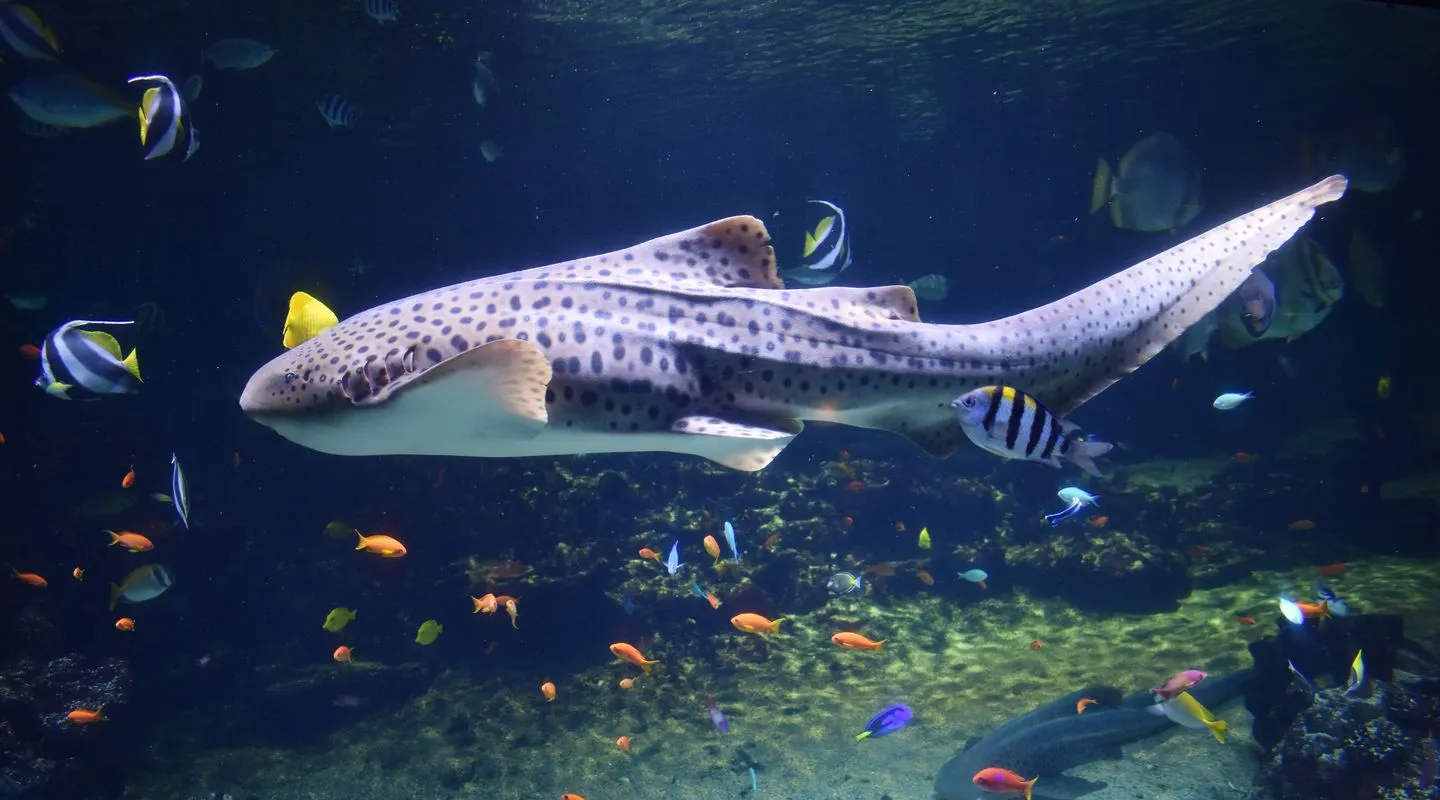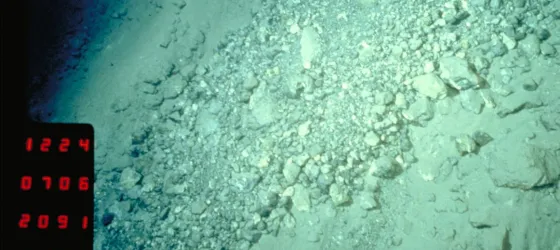A zebra shark born in Nausicaá recently joined the Island Stories area in the Mankind and Shores exhibition.

Sharks

Identity card
Not evaluated
Indian Ocean and Southwest Pacific Ocean.
It lives near coral reefs. It is found at depths of down to 63 metres but more commonly between 5 and 30 metres.
The zebra shark measures up to 2.40 metres
It feeds on molluscs, small fish and crustaceans.
Nausicaá is taking part in the EAZA Ex situ program (EEP), a European conservation programme.

Several zebra sharks have been born at Nausicaá as part of a European conservation program!
A zebra shark born in Nausicaá recently joined the Island Stories area in the Mankind and Shores exhibition.
Biomimetics: the shark has inspired the creation of some innovative technologies. Its skin has been used as a model for creating antibacterial, hydro/aerodynamic and antifouling clothing; its fins have helped to improve the stability of airplanes thanks to “sharklets” and the shape of its tail has served as inspiration for tidal steam generators.
This shark lives mainly in the Indian and Pacific Oceans. It spends most of the day perched on a reef, in a coral environment. It can be found at depths down to 63 metres, but more commonly between 5 and 30 metres.
The zebra shark is a peaceful animal if it feels safe and can be approached by those who know how to be respectful. An opportunity for divers to take a superb souvenir photo!
At birth, this shark's coat is striped like that of a zebra. Then, as it grows, it changes to become spotted like that of a leopard as an adult. The zebra shark can measure up to 2.40 metres.
With its flat teeth and powerful jaws, it can break the shells of the molluscs and crustaceans that it hunts at night.
This species is oviparous; the female lays 2 to 4 eggs in envelopes measuring between 15 and 20 cm long.
EN - Endangered and declining further.
Its population, which until 2015 had the VU status (vulnerable species), is now considered as an endangered species.
This species is only protected when it lives in a protected marine area. Otherwise, there are no measures.
Since 2022, the StAR project in Raja Ampat, Indonesia, has aimed to raise young zebra sharks from eggs collected in public aquariums until they are able to feed themselves in order to reintroduce them into the wild.
MANKIND AND SHORES

The Ocean Mag
In the spotlight
The Portuguese Parliament has adopted a moratorium banning seabed mining in its territorial waters until 2050.

Article
A look back at the year's births at Nausicaá.
Article
Combining art, science and industry to restore coral reefs.